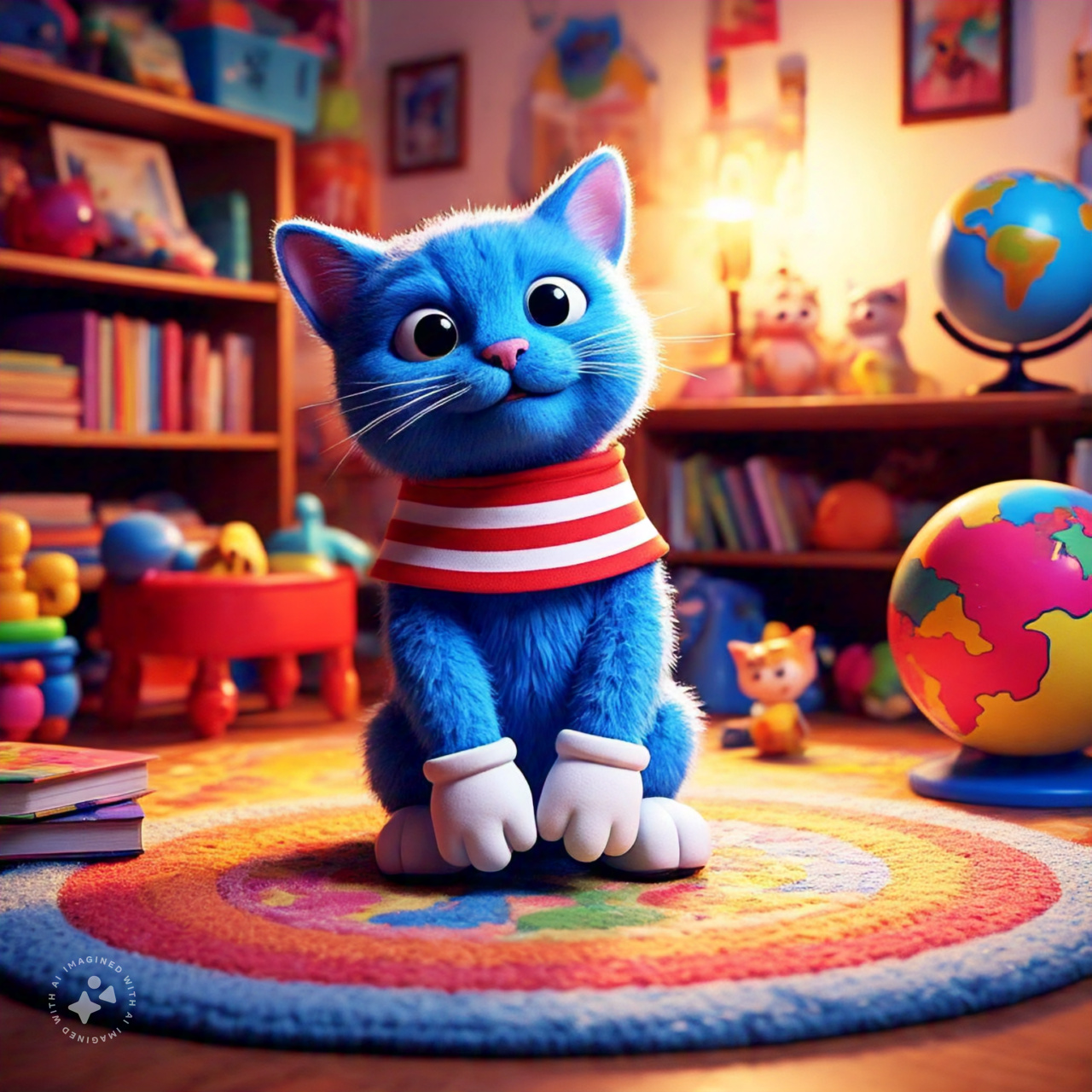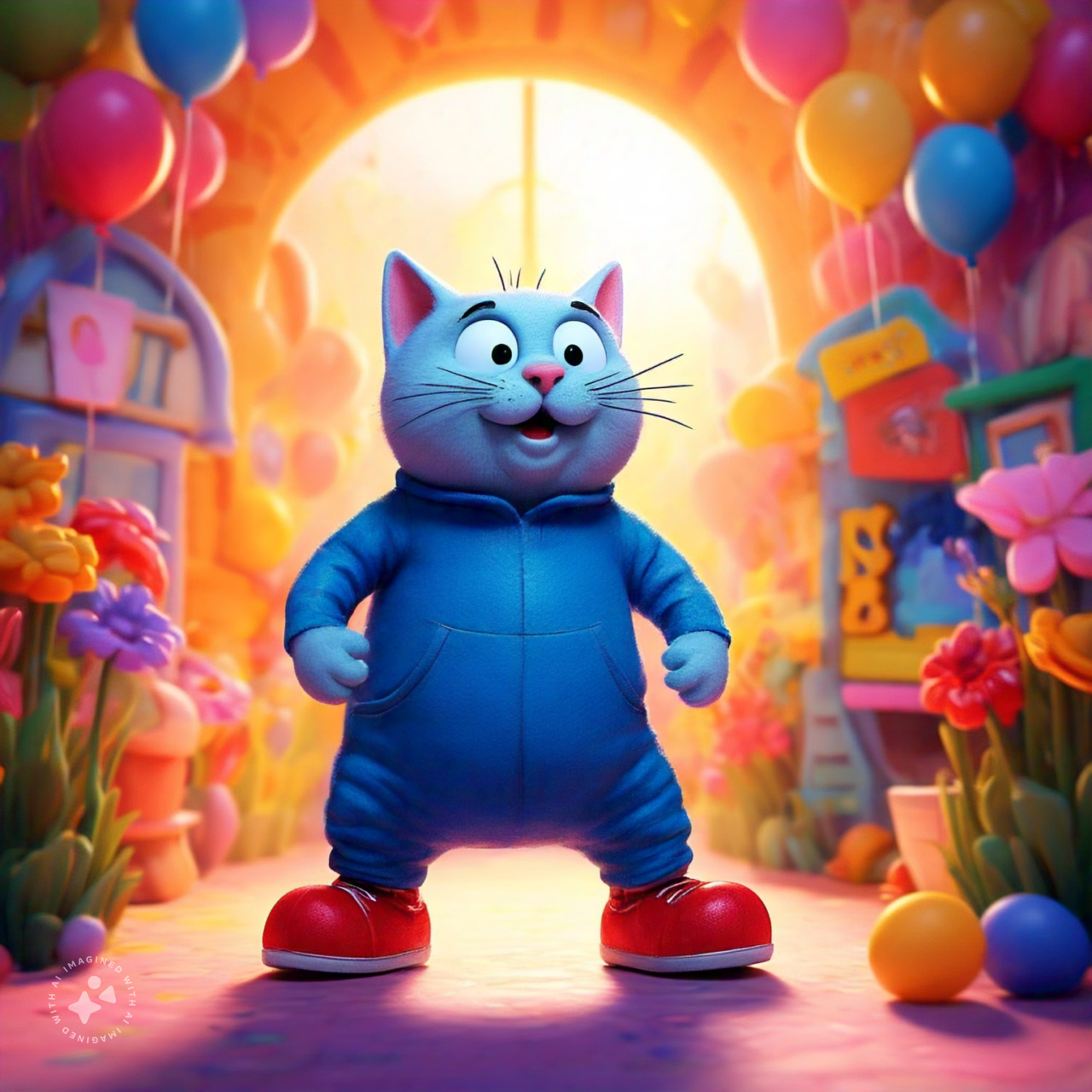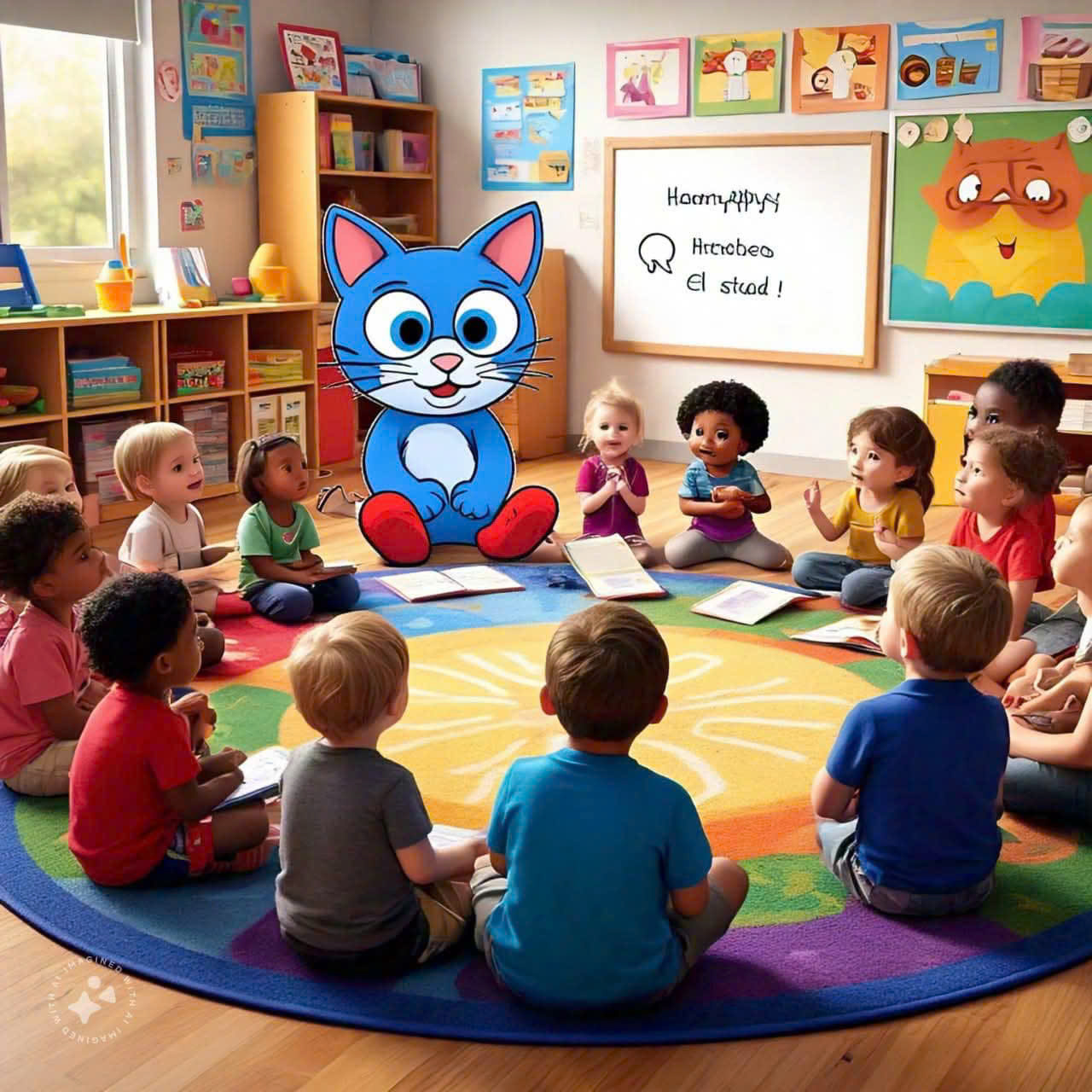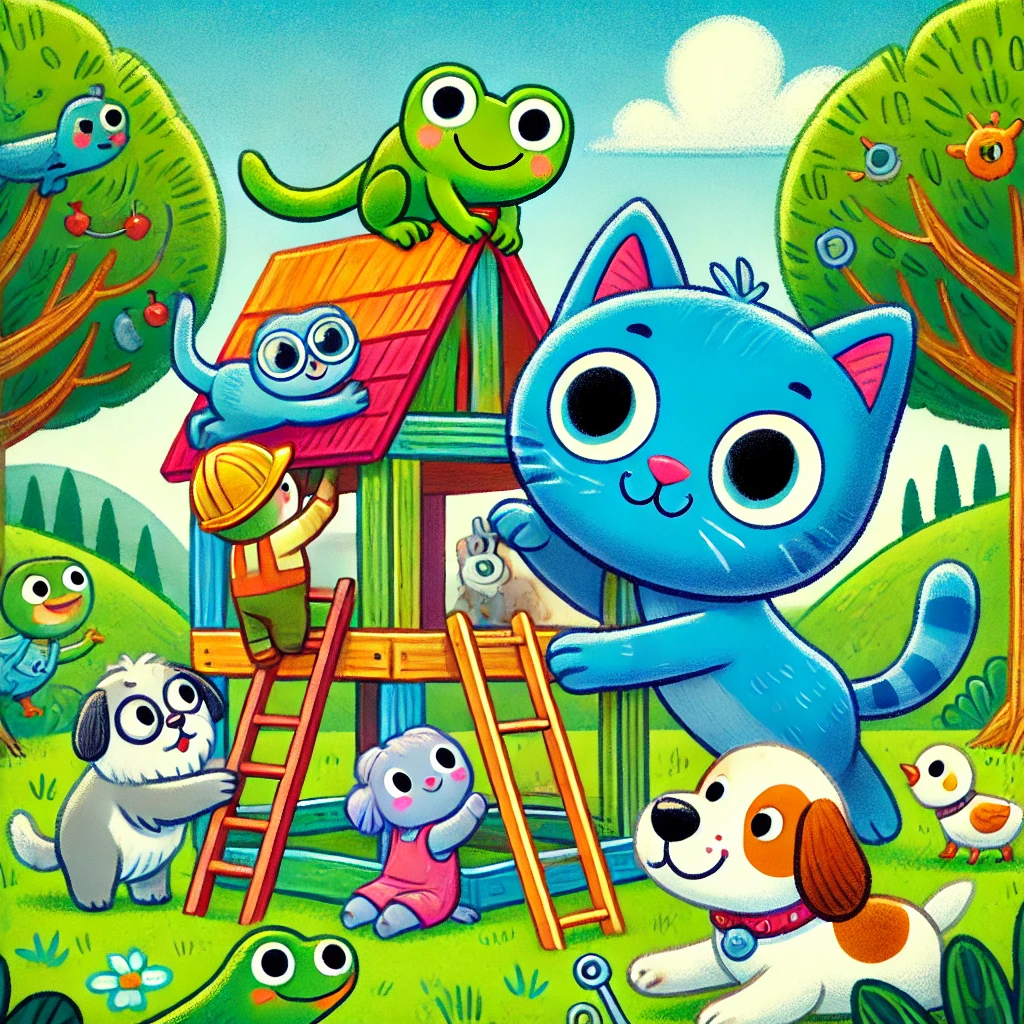The Art of Storytelling in Children’s Books
Storytelling is an essential part of human communication, an art that transcends time, place, and culture. Whether shared around a campfire, told through songs, or written on pages, stories have the power to convey lessons, evoke emotions, and stir imaginations. In children’s literature, the process of storytelling takes on an especially unique and dynamic form, combining words with illustrations to create an immersive experience for young readers. One of the most popular and beloved children’s book series in recent years, Pete the Cat, exemplifies how the marriage of visual art and narrative can produce a captivating story.
The Pete the Cat series, created by Eric Litwin and illustrated by James Dean, stands as a testament to the power of combining simple text with powerful visual storytelling. Through Pete’s adventurous journeys, young readers are not only introduced to vibrant and exciting characters, but they also experience the world through the artistic lens of James Dean’s illustrations. These illustrations play an equally crucial role in conveying the emotions and themes of each story, sometimes even taking the lead in storytelling when words fall short.
At the heart of Pete the Cat’s storytelling is a carefully curated interplay between the illustrations and the narrative. While Litwin’s words provide a foundation for the plot, it is Dean’s artwork that brings these tales to life. Together, they create a synergy that keeps readers engaged, entertained, and, most importantly, emotionally connected to the story. This balance between words and pictures is crucial in crafting a memorable and meaningful children’s book experience.
In this article, we will explore how Pete the Cat’s illustrations enrich the storytelling process, focusing on how they help establish mood, develop character, enhance themes, and invite readers into an interactive experience. Each of these elements plays a significant role in creating an emotional and visual connection that keeps readers returning to Pete’s world time and time again.
The Role of Illustrations in Children’s Literature
Illustrations are not just decorative elements in children’s books—they are integral to the story itself. In fact, they often carry as much weight as the words, offering additional context, emotional depth, and visual cues that help readers fully engage with the narrative. In the case of Pete the Cat, James Dean’s artwork does more than just show readers what’s happening—it invites them into a colorful world that mirrors Pete’s emotions and actions, helping children understand complex ideas in a more accessible and visual manner.
The primary role of illustrations in children’s literature is to complement and enhance the text. In books like Pete the Cat, where the language is simple and the messages are often direct, illustrations act as a bridge to understanding. For instance, when Pete the Cat is faced with a challenging situation, the illustrations convey his emotions in a way that words might not fully capture. A slight change in Pete’s posture or a shift in the colors around him can convey his feelings of excitement, worry, joy, or curiosity, making it easier for young readers to understand and connect with his experiences.
Moreover, the illustrations in Pete the Cat often provide visual context that supports the narrative. For example, Pete’s journey through different environments—such as his school, a forest, or the beach—can be better appreciated through detailed illustrations that show the setting in vibrant colors. These settings help the reader understand where Pete is, but more importantly, they reflect the mood and tone of the story. A bright and sunny background might suggest happiness or calm, while darker hues could indicate challenges or sadness.
The effectiveness of these illustrations lies in their ability to communicate emotion and meaning without requiring additional text. By examining the images, readers can often infer details that are not explicitly mentioned in the text. For instance, if Pete is depicted with a wide smile and surrounded by friends, readers can instantly understand that he is content and at ease. On the other hand, a scene where Pete is alone in a darkened room with muted colors might hint at feelings of isolation or uncertainty.
Through this interplay of images and text, the illustrations in Pete the Cat help readers develop a deeper emotional understanding of the characters and the story. They also allow young readers to interpret the narrative in their own unique ways, promoting creativity and personal engagement with the material.
The Use of Color in Pete the Cat
One of the most distinctive features of the Pete the Cat illustrations is the use of color. Dean’s vibrant and bold color palette plays a significant role in establishing the atmosphere of the stories. Colors are not only visually appealing but also carry emotional and thematic weight. By carefully choosing specific colors for each scene, Dean adds depth and dimension to the storytelling process, inviting readers to feel the story as much as they read it.
Pete, the main character, is famously depicted as a cool blue cat. His color is not arbitrary—blue is often associated with calmness, coolness, and serenity. This choice is symbolic, reinforcing Pete’s laid-back and confident personality. Despite facing challenges throughout the series, Pete remains unfazed and composed, and his blue color reflects this unshakable sense of calm. His signature hue serves as a constant throughout the stories, making him a memorable and recognizable figure for readers.
But it is not just Pete’s color that draws attention. The overall use of color in each illustration plays a vital role in conveying the emotional tone of the story. In Pete the Cat and His Four Groovy Buttons, for example, the colorful buttons on Pete’s shirt provide a visual representation of the joy and playfulness of the character. As Pete loses buttons throughout the story, the bright colors of the buttons contrast against his cool blue fur, emphasizing the ups and downs of his journey.
On the other hand, in more somber moments, the background color palette may shift to cooler tones, such as purples and grays, to reflect Pete’s changing emotions. When Pete feels down or worried, the colors around him may become more muted, signaling to the reader that something has changed. This use of color adds an emotional layer to the story, creating a more immersive experience for the reader.
The power of color extends beyond its emotional impact—it also serves as a tool for teaching. Young readers can learn to associate certain colors with specific emotions or themes, helping them develop their emotional intelligence. Through the thoughtful use of color, Pete the Cat’s illustrations offer a subtle yet effective way of enhancing the storytelling experience.
Illustrations that Invite Interaction
Another distinctive feature of the Pete the Cat series is the way the illustrations invite reader interaction. Rather than just passively observing the events of the story unfold, children are encouraged to engage with the illustrations in a way that enhances their understanding of the narrative.
This interactive aspect is especially evident in books like Pete the Cat: I Love My White Shoes, where Pete’s shoes change colors as he walks through different environments. These changes are not only visually engaging but also present an opportunity for young readers to participate in the story. As Pete steps into a puddle, mud, or strawberries, the color of his shoes changes, providing a simple yet fun opportunity for children to identify and talk about colors.
This element of interactivity encourages children to be active participants in the storytelling process. They are not just reading about Pete’s adventures—they are involved in shaping the story by observing the changes in the illustrations. This involvement not only increases engagement but also fosters a sense of ownership over the reading experience. Children are encouraged to think critically about the story, predicting what will happen next based on the visual cues they see in the illustrations.
In addition to the changing colors, the illustrations often include small details that invite closer examination. Pete’s environment is rich with visual details that can prompt further discussion, such as the background elements or the expressions on other characters’ faces. These subtle illustrations allow children to look beyond the main story and explore the world of Pete the Cat in a more comprehensive way.
The interactive nature of these illustrations provides a valuable learning experience for children. They develop their observational skills, learn about cause and effect, and gain a deeper understanding of how illustrations and text work together to tell a complete story.
The Emotional Power of Illustrations in Pete the Cat
In children’s literature, the emotional connection between the reader and the story is crucial for engagement. Young readers are developing their emotional intelligence, and books like Pete the Cat offer a chance to experience and process a range of emotions through both text and illustrations. The illustrations in Pete the Cat are more than just visual depictions of the story—they are instrumental in evoking feelings, creating empathy, and helping young readers navigate complex emotional situations. James Dean’s artwork plays a vital role in establishing these emotional connections by visually conveying the moods of the characters and the atmosphere of each scene.
Pete, as a character, is emotionally resilient. Despite facing challenges throughout his adventures, he remains upbeat and positive. This emotional resilience is depicted visually through his body language, facial expressions, and interactions with his environment. Pete’s big, wide eyes, smile, and relaxed posture are all indicative of his calm and confident personality. His physical appearance conveys an emotion of ease and contentment, regardless of the events unfolding around him.
For example, in Pete the Cat and His Four Groovy Buttons, Pete experiences a series of small frustrations when his buttons fall off one by one. As each button is lost, Pete’s expression shifts slightly, but it is never one of complete distress. Instead, his facial expressions remain positive, and his posture does not convey panic. The illustrations show him accepting the loss with a sense of resilience, saying that “it’s all good” as he continues on his journey.
This ability to convey positive emotion through Pete’s visual portrayal is an important aspect of the series. Young readers learn through Pete’s calm demeanor that it’s okay to face setbacks in life with a positive outlook. By focusing on his facial expressions and posture, children can begin to mirror Pete’s responses to frustration, teaching them to cope with their own challenges in a healthy and constructive manner.
Beyond Pete, the other characters in the series also contribute to the emotional landscape of the story. Whether it’s Pete’s friends or his family, the supporting characters are visually depicted in a way that aligns with the tone of the scene. For example, when Pete is excited or happy, his friends are often seen with big smiles or wide eyes, enhancing the feeling of joy in the narrative. When Pete is facing a challenge or uncertainty, the illustrations may show his friends in more neutral or concerned expressions, creating a contrast that helps readers understand the dynamics of the story and the emotional landscape.
The power of visual emotion is particularly evident in scenes where Pete is faced with challenges, but his attitude remains positive. Through the use of warm, bright colors, and Pete’s positive expressions, young readers are invited to feel that same optimism and resilience. The emotional connection established through these illustrations helps children learn how to navigate their own emotions, reinforcing the idea that emotional responses to situations can be managed with a positive and calm outlook.
Illustrating Concepts and Themes
Children’s books often carry important lessons and themes, and the illustrations in Pete the Cat are instrumental in bringing these themes to life. While the text introduces ideas like sharing, friendship, and persistence, the illustrations provide a visual representation of these concepts, making them more tangible for young readers. By transforming abstract ideas into something concrete and visual, Dean’s illustrations enhance the storytelling and help children grasp the lessons being taught.
Take, for example, the theme of resilience in the face of adversity. In Pete the Cat and His Four Groovy Buttons, Pete loses his buttons, one by one, but he doesn’t get upset. He simply continues on his journey, accepting that things don’t always go as planned. This message of resilience is mirrored in the illustrations, where Pete is shown in a calm, steady pose as he adapts to each situation. As Pete walks through different environments, his calm demeanor and positive expression serve as a visual metaphor for resilience.
The recurring theme of “it’s all good,” a central message in the Pete the Cat series, is also enhanced through Dean’s illustrations. Pete’s attitude towards the changing circumstances in his life is visually reinforced through the color schemes, body language, and expressions of the character. Each time Pete faces a challenge, he remains centered and peaceful, and this visual representation reinforces the message of maintaining a positive outlook despite life’s ups and downs.
Another key theme in the series is the power of self-confidence. Pete’s confidence in himself, despite the changes he faces, is depicted through his expressive body language and calm expressions. He doesn’t need to prove anything to anyone—his relaxed posture and laid-back demeanor serve as an illustration of self-assurance. This visual representation of confidence teaches young readers that it’s okay to embrace who they are and to remain confident even in the face of uncertainty.
In addition to resilience and self-confidence, the theme of friendship is also an important aspect of the Pete the Cat stories. Pete’s interactions with his friends and the way they support each other are often highlighted in the illustrations. These visual depictions help children understand the value of friendship and the importance of community, particularly when faced with challenges. The way Pete and his friends share in the joy of his adventures, and help one another along the way, visually communicates the importance of supporting those around us.
Through Dean’s skillful use of imagery, themes such as resilience, self-confidence, and friendship come to life on the page. These visual representations help reinforce the lessons of the story, making it easier for young readers to internalize these concepts. By showing rather than telling, the illustrations create a lasting impact that resonates with children long after they have finished reading.
The Interactive Element of Pete the Cat’s Illustrations
One of the most engaging aspects of the Pete the Cat books is how the illustrations invite readers to participate in the story. Rather than just observing Pete’s journey from the sidelines, children are encouraged to interact with the illustrations in meaningful ways. This interactive approach to storytelling not only enhances the reader’s experience but also fosters creativity and critical thinking.
In Pete the Cat: I Love My White Shoes, for example, readers are prompted to actively participate in the story by predicting what will happen next. As Pete walks through different environments, his white shoes change color based on what he steps into—whether it’s a puddle, mud, or strawberries. The illustrations encourage children to anticipate the next color change and engage with the narrative by guessing what Pete will encounter next. This interaction adds an element of excitement and anticipation to the reading experience.
This interactive component is not limited to color changes alone. The illustrations in Pete the Cat often include small details that prompt discussion and engagement. Readers may notice specific objects in the background, changes in the scenery, or other visual cues that encourage them to think about the story in a more nuanced way. For example, Pete’s environment may change subtly as he moves from one scene to the next, creating a visual narrative that children can explore as they read.
Moreover, the simplicity and boldness of the illustrations allow for easy identification of patterns and themes, making it easier for young readers to connect with the story. By involving the reader in the process of recognizing patterns, colors, and changes in the story’s environment, the illustrations create an interactive experience that deepens the reader’s connection to the story and encourages independent thinking.
The interactive nature of the Pete the Cat illustrations also promotes an understanding of cause and effect. As Pete’s shoes change color based on his actions, young readers learn how decisions and events can influence outcomes. This is a valuable lesson in both problem-solving and emotional intelligence, as children are encouraged to think about the impact of their own choices.
Through these interactive illustrations, Pete the Cat transforms from a simple story into an engaging, immersive experience. The illustrations not only enrich the storytelling but also encourage active participation, helping young readers develop important cognitive and emotional skills as they engage with the narrative.
The Enduring Magic of Pete the Cat’s Illustrations
The Pete the Cat series demonstrates how illustrations can transform a simple children’s book into an unforgettable experience. James Dean’s illustrations bring the stories to life in a way that words alone cannot, engaging readers both emotionally and intellectually. Through his vibrant use of color, expressive characters, and interactive elements, Dean has created a world that children can connect with and explore.
The illustrations in Pete the Cat are more than just a visual accompaniment to the text—they are an essential part of the storytelling process. They convey emotions, enhance themes, invite interaction, and create an immersive experience that draws young readers into Pete’s world. As children follow Pete’s adventures, they not only experience his journey through the words but also live it through the dynamic and engaging illustrations.
By blending text and visual art so seamlessly, Pete the Cat offers a model for how illustrations can elevate children’s literature. They make complex emotions more accessible, provide a deeper understanding of the themes, and foster a sense of participation that keeps children engaged. In the end, the illustrations are what truly bring the story to life, creating a lasting impact on readers of all ages.
The magic of Pete the Cat lies in its ability to combine the simple joys of childhood with the depth of emotional and intellectual growth. Through its illustrations, the series captures the essence of these early learning experiences, allowing children to not only read but also experience and understand the world in a new way. The lasting impact of these illustrations ensures that Pete the Cat will continue to be a beloved series for generations to come.
How Pete the Cat’s Illustrations Develop Character and Personality
In literature, particularly in children’s books, characters are the heart and soul of the story. They are the ones with whom readers forge emotional connections and through whom they experience the narrative’s emotional highs and lows. In Pete the Cat, James Dean’s illustrations do much more than simply depict the character of Pete—they breathe life into him. Through his art, Dean crafts a visual personality that complements the text, helping readers connect with Pete on a deeper, more personal level.
Pete the Cat, as a character, is simple but profoundly endearing. His blue fur, big eyes, and easygoing smile are all important features that give him a recognizable and relatable identity. Yet, it is through Dean’s illustrations that Pete’s character truly comes to life, and his personality is developed beyond the words of the story. From his posture to his expressions, every detail in the illustrations contributes to Pete’s laid-back, confident demeanor.
One of the most important elements of character development in Pete the Cat is the portrayal of his emotions. While the text may tell readers that Pete is feeling happy, sad, excited, or even frustrated, it is through the illustrations that Pete’s emotional state is fully realized. For instance, when Pete is content, his wide smile, calm expression, and relaxed posture all communicate a sense of ease and satisfaction. When faced with adversity, his expressions shift slightly, but they never convey overwhelming distress. Instead, Pete’s body language stays relaxed, and his face remains unbothered, illustrating his ability to remain calm and confident in difficult situations.
This ability to convey emotion through visual cues is what allows young readers to connect with Pete in a meaningful way. Children often look to illustrations to help them understand how characters are feeling, and in Pete the Cat, Dean’s artwork does just that. When Pete is challenged—whether by losing his buttons or navigating through muddy puddles—his emotions are expressed through subtle changes in his face and posture. These visual cues allow children to better understand the character’s emotional arc, helping them identify and empathize with Pete’s journey.
Pete’s consistent visual traits, such as his bright blue fur and wide eyes, also help reinforce his personality. His unchanging appearance, despite the ups and downs of the story, makes him instantly recognizable and consistent in the eyes of the reader. This visual consistency reinforces the central idea that Pete is an unflappable, cool, and confident character. Pete may face challenges, but his calm demeanor in the face of adversity tells young readers that it’s okay to stay positive, no matter what happens.
Dean’s illustrations also convey Pete’s relationships with other characters. In the Pete the Cat series, Pete is often seen interacting with friends, family, and other characters. These relationships are visually conveyed through how characters are positioned in the illustrations, the expressions on their faces, and the body language between them. For example, when Pete is surrounded by friends, their smiling faces and relaxed posture show their camaraderie and mutual support. The warmth of these relationships is communicated not just through words but through the way Pete and his friends are depicted together.
Through these illustrations, Pete’s personality comes into sharp focus. He is calm, cool, and collected, and these visual cues play a significant role in shaping how readers perceive him. As children engage with the book, they are not only reading about Pete’s adventures but also seeing his character develop visually. This dynamic combination of text and illustration allows for a deeper understanding of Pete as a character and encourages readers to internalize some of his key qualities—confidence, resilience, and a positive outlook.
The Role of Visual Repetition in Building Character
Another technique that plays a significant role in the development of Pete’s character is the use of visual repetition. In many of the Pete the Cat books, certain elements—such as Pete’s iconic blue fur, his expressive eyes, and the colorful buttons on his shirt—are repeated throughout the illustrations. This repetition helps reinforce key aspects of Pete’s personality and strengthens his identity within the story.
Visual repetition creates a sense of consistency and familiarity for the reader. When children encounter the same visual elements over and over again, they begin to recognize them as symbols of Pete’s personality. For example, Pete’s blue fur becomes a visual cue for his laid-back nature, and his wide eyes reflect his curiosity and openness to new experiences. As these visual elements appear throughout the story, they continually remind the reader of who Pete is, providing a steady framework for understanding his character.
In Pete the Cat and His Four Groovy Buttons, for instance, the repetition of the groovy buttons is a key feature in both the illustrations and the story. Pete’s buttons serve as a focal point throughout the narrative, with each button representing a different stage in his journey. As Pete loses each button, the illustrations reinforce the changes in his emotional state, while the repetition of the buttons themselves creates a visual structure that readers can easily follow. The consistent appearance of the buttons in each illustration serves as a visual anchor, helping young readers keep track of the story’s progression and emphasizing the theme of resilience in the face of loss.
Additionally, the repetition of visual elements in the illustrations can help reinforce the central themes of the story. In many of the Pete the Cat books, recurring motifs—such as Pete’s favorite shoes, his love of music, or his relaxed attitude—are repeated in the illustrations, strengthening the key messages of the story. By continuously highlighting these elements through repetition, Dean ensures that the reader remains focused on the core ideas of the book.
This visual repetition not only supports character development but also makes the book more engaging for young readers. The predictability of certain elements, such as the changing colors of Pete’s shoes or the loss of buttons, gives children a sense of security and structure. It also invites them to anticipate what will happen next, creating a sense of excitement and participation in the story.
The Connection Between Pete’s Character and the Visual Style
James Dean’s distinctive illustration style is closely tied to Pete’s character. The simplicity of the drawings, combined with bold colors and clear lines, creates a visual identity that reflects Pete’s uncomplicated, cool, and confident nature. This minimalist approach ensures that the illustrations are accessible to young readers while still conveying a deep sense of personality and emotion.
The decision to use a simple yet expressive style in Pete the Cat reflects the philosophy of the character himself—Pete is uncomplicated and direct in his approach to life. His character does not need elaborate details or complex expressions to convey his feelings. Instead, Pete’s personality shines through in the simplicity of his design. This visual simplicity allows readers to focus on the essence of Pete’s character without being distracted by unnecessary details.
Dean’s illustrations are also highly expressive despite their simplicity. The characters’ eyes, especially Pete’s, are drawn with great attention to detail, allowing them to convey a wide range of emotions. Pete’s facial expressions, combined with his expressive eyes and relaxed posture, are key to understanding his character. These features are all part of the visual language that Dean has created to communicate Pete’s personality to young readers.
Moreover, the use of bright, bold colors—such as Pete’s blue fur and the vibrant colors of his environment—helps establish a cheerful and optimistic tone that aligns perfectly with Pete’s personality. These colors evoke feelings of happiness, excitement, and calm, reinforcing Pete’s positive, laid-back attitude. The visual style itself reflects the core values of Pete’s character, ensuring that the reader’s experience is consistently aligned with the message of the story.
The connection between Pete’s character and the visual style is one of the reasons why Pete the Cat resonates so strongly with readers. The simplicity of the illustrations makes Pete accessible and relatable, while the bold colors and expressive details give depth and personality to the character. This visual style is an essential part of what makes Pete such a memorable and beloved character in children’s literature.
The Impact of Illustrations on Reader’s Understanding of Pete’s Journey
Beyond simply developing Pete’s character, the illustrations in Pete the Cat also enhance the reader’s understanding of his journey. In many ways, the illustrations serve as a roadmap for the emotional and thematic development of the story. As Pete moves through various challenges, the way he is visually portrayed helps readers track his emotional evolution, providing insight into how he is processing the events around him.
In Pete the Cat and His Four Groovy Buttons, for instance, Pete’s emotional journey is reflected in the way the illustrations evolve as he loses his buttons. At the beginning of the story, Pete is cheerful and carefree, with vibrant colors and a relaxed posture. As he loses each button, the illustrations subtly change to reflect his growing awareness of the situation. However, Pete’s positive attitude remains intact, and his character stays consistent throughout the story, even as his external circumstances change. The illustrations help readers understand that while Pete’s external world may shift, his internal sense of calm and confidence remains steadfast.
This visual progression allows readers to better understand the impact of external events on Pete’s emotional state. The illustrations do not merely depict Pete’s journey—they allow readers to experience it alongside him, reinforcing the idea that, no matter what challenges come his way, Pete’s positive outlook is what keeps him going.
Through this visual storytelling, young readers are able to track Pete’s emotional growth and internal journey. The illustrations not only provide context for the events of the story but also give readers the tools they need to interpret and understand the emotions behind those events. This deeper level of engagement allows readers to connect with Pete’s journey on a more personal level, making his story more impactful and meaningful.
The Visual Foundation of Pete the Cat’s Enduring Appeal
James Dean’s illustrations in Pete the Cat play a critical role in developing Pete’s character and personality. Through his use of color, expression, body language, and visual repetition, Dean creates a character who is not only memorable but deeply relatable to young readers. Pete’s simple yet expressive design captures the essence of his character, allowing readers to connect with him on an emotional level.
These illustrations also help young readers understand Pete’s journey, providing insight into his emotional experiences and reinforcing the key themes of the story. The simplicity of the visual style, combined with its depth and expressiveness, makes Pete’s story accessible and engaging, while also conveying important life lessons about resilience, confidence, and positivity.
In the end, the illustrations are an essential part of what makes Pete the Cat so beloved. They bring Pete’s character to life, enhance the emotional depth of the story, and invite readers to participate in Pete’s journey in a meaningful way. The combination of text and illustration creates a complete and immersive experience, making Pete the Cat not just a book but an emotional journey for young readers.
The Influence of Pete the Cat’s Illustrations on Modern Children’s Literature
Since the release of Pete the Cat, the series has become a cornerstone of modern children’s literature, influencing both young readers and the way stories are told in picture books. The innovative and unique approach to blending illustrations and text has set a new standard for children’s books. James Dean’s illustrations in Pete the Cat have helped pave the way for other illustrators and authors to experiment with visual storytelling in ways that are both engaging and educational.
The lasting appeal of Pete the Cat is not just in the story itself but in the way that the illustrations have reshaped the expectations of how picture books should interact with young readers. In the past, illustrations in children’s books often served a purely supplementary role, meant to support and accompany the text. However, in the case of Pete the Cat, the illustrations are much more integral to the story and its themes. The simplicity and expressiveness of the illustrations make the book accessible to young readers, but they also provide depth that enhances the overall reading experience.
One of the key ways that Pete the Cat has influenced modern children’s literature is through its use of color and emotional cues. In many of the books that followed in its wake, illustrations are no longer just visual depictions of scenes; they actively contribute to the emotional tone of the story. Dean’s use of bold, bright colors in his illustrations, particularly the vivid blue of Pete’s fur, has become iconic. These colors are not only visually striking but also serve to convey emotions and tone throughout the story. For example, warm, vibrant colors are used to signify positivity and calm, while more muted or subdued tones may suggest moments of reflection or challenge. The seamless integration of color and emotion in the illustrations has encouraged many contemporary illustrators to think more critically about how visual elements can be used to convey feelings and deepen the emotional impact of their stories.
This emphasis on color and emotion has been adopted by many other authors and illustrators in recent years. Books like The Very Hungry Caterpillar by Eric Carle or Brown Bear, Brown Bear, What Do You See? by Bill Martin Jr. and Eric Carle use color not only as a decorative tool but as a means of supporting the narrative and enhancing the emotional journey of the characters. This approach aligns with the principles seen in Pete the Cat, where the illustrations work in tandem with the text to evoke a deeper connection with the reader.
Additionally, the character-driven approach to storytelling in Pete the Cat has influenced many other children’s books that focus on the growth and development of their protagonists through visual storytelling. Pete’s simple yet relatable character—marked by his confidence and resilience—is something many young readers can connect with. His steady emotional journey is reflected not only in the text but in the way he is portrayed in each illustration. The use of consistent, recognizable features in Pete’s character design makes him approachable and encourages young readers to feel a personal connection to him. This character-focused approach to storytelling has become a hallmark of many modern picture books, which now often feature characters who model positive behaviors, emotional resilience, and problem-solving skills.
The interactive nature of the illustrations in Pete the Cat has also set a precedent for future children’s books. In many ways, the reader’s involvement in the story through the changing colors of Pete’s shoes or the repeated, engaging phrases invites participation in a way that enhances the reader’s experience. This sense of engagement encourages young readers to think critically about what they’re reading, making them active participants rather than passive recipients of the story. Books that follow this model often include similar interactive features, such as questions, puzzles, or visual clues, that invite the reader to think more deeply about the story and its message.
The Educational Impact of Pete the Cat’s Illustrations
Beyond the realm of entertainment, the Pete the Cat series has also had a significant educational impact. The illustrations in these books do more than simply support the narrative—they also serve as teaching tools, helping children develop essential skills in areas like emotional intelligence, problem-solving, and creativity. These illustrations not only offer visual representations of the themes and lessons in the text but also encourage young readers to think critically and reflect on their own experiences.
One of the key educational benefits of Pete the Cat’s illustrations is their ability to help children understand and process emotions. Through Pete’s calm and positive attitude, children learn how to approach challenges with a sense of resilience. The visual cues in the illustrations—Pete’s relaxed posture, his serene facial expression—reinforce the message that it is okay to feel frustrated or upset, but it’s important to respond in a way that is constructive and positive. This visual representation of emotional resilience offers young readers a model for how to handle setbacks in their own lives.
Furthermore, the use of color and visual repetition in the Pete the Cat books helps children develop pattern recognition and sequencing skills. As Pete moves through the story, the illustrations provide visual cues that help children anticipate what will happen next. Whether it’s the changing colors of Pete’s shoes or the repeated loss of his groovy buttons, the illustrations encourage children to follow along and predict the outcomes based on visual information. This active participation in the story enhances cognitive development and problem-solving abilities, which are crucial skills for young learners.
The way the illustrations encourage readers to connect emotionally with Pete and his experiences also supports the development of empathy. By visually observing Pete’s calm reactions to adversity, young readers can learn how to manage their own emotions and become more empathetic toward others. This is especially important in today’s educational climate, where emotional intelligence and social-emotional learning are increasingly recognized as essential components of child development.
The simplicity of Dean’s illustration style also makes the books highly accessible to young readers, particularly those who are just beginning to read on their own. The bold lines, clear images, and uncomplicated character designs make it easy for children to focus on the narrative while still engaging with the story’s deeper themes. The clarity of the illustrations ensures that even young children can understand and connect with the story, regardless of their reading level. This accessibility has made the Pete the Cat series an invaluable tool in classrooms and homes alike, helping children not only to read but to understand the world around them.
The Legacy of Pete the Cat in Children’s Picture Books
As the Pete the Cat series continues to grow in popularity, its impact on children’s literature remains undeniable. The books have become a mainstay in children’s libraries, classrooms, and homes, not only because of their engaging stories but also because of the powerful role that the illustrations play in their success. James Dean’s distinctive style has set a new standard for how illustrations can function in children’s literature, influencing a whole generation of illustrators and authors who look to Pete the Cat as a model for integrating visual storytelling and thematic depth.
The lasting popularity of Pete the Cat also speaks to the timeless nature of the book’s appeal. The illustrations, with their bold colors, expressive characters, and emotional depth, transcend age and time. Whether read by preschoolers or shared between parents and older children, the Pete the Cat books continue to resonate because they offer more than just a simple story—they offer an experience that encourages emotional growth, creativity, and a positive outlook on life.
In the years since its release, Pete the Cat has been adapted into a variety of formats, including digital platforms and animated series, further solidifying its place in modern children’s culture. As these adaptations continue to evolve, the core message of the books—the importance of staying calm and positive no matter what life throws your way—remains unchanged. The illustrations, though reimagined in different formats, continue to convey the same warmth, simplicity, and emotional resonance that made the original books so successful.
Ultimately, the legacy of Pete the Cat and its illustrations is not just about the books themselves—it’s about the lessons they impart and the emotional connections they foster. James Dean’s illustrations have created a world where children can learn, grow, and understand themselves in a deeper way. Through Pete’s adventures and the colorful, dynamic world he inhabits, young readers are encouraged to embrace life’s challenges with a sense of confidence, resilience, and joy.
The Lasting Power of Pete the Cat’s Illustrations
The Pete the Cat series is a shining example of how illustrations can elevate a children’s book from simple entertainment to a deeply educational and emotionally enriching experience. Through James Dean’s skillful use of color, expression, and character design, the illustrations in Pete the Cat not only bring the story to life but also help young readers develop essential life skills, emotional intelligence, and a positive outlook.
As Pete continues to teach young readers the importance of resilience, confidence, and optimism, his illustrations remain a powerful tool in shaping how children experience the world around them. The simplicity and emotional depth of the illustrations have set a new standard for children’s literature, influencing future generations of authors and illustrators. Pete’s colorful world has become a lasting symbol of joy and positivity, ensuring that his adventures will continue to inspire children for years to come.









